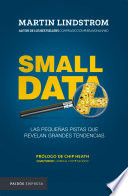

Small data refers to the small, specific pieces of information that can provide insights into consumer behavior and trends. Unlike big data, which relies on vast amounts of data points to derive patterns, small data focuses on the nuances of individual behavior. The author emphasizes that small data can reveal the underlying motivations and emotions of consumers, which are often overlooked in big data analysis. By examining small data, businesses can gain a deeper understanding of their customers’ needs and preferences, allowing them to tailor their products and marketing strategies more effectively. This approach can lead to more meaningful connections with consumers and ultimately drive sales.
Continue readingObservation is a critical component of gathering small data. The author stresses the importance of being present in the environment where consumers interact with products or services. This can involve observing customers in stores, analyzing their behaviors, and understanding their interactions with products. By taking the time to observe and engage with consumers, businesses can gather valuable insights that are not captured through surveys or analytics alone. This observational approach allows companies to identify pain points, desires, and behaviors that can inform product development and marketing strategies.
Continue readingPersonal stories are a powerful way to connect with consumers on an emotional level. The author highlights how sharing personal anecdotes can humanize brands and create a sense of relatability. By understanding the personal stories of customers, businesses can craft narratives that resonate with their target audience. This emotional connection can lead to increased loyalty and brand advocacy. Furthermore, the author argues that personal stories can serve as a source of inspiration for innovation, as they often reveal unmet needs or desires that can be addressed through new products or services.
Continue readingThe author discusses the balance between data-driven decision-making and intuition. While data provides valuable insights, the author argues that intuition plays a crucial role in understanding the context behind the data. By combining data analysis with intuitive thinking, businesses can make more informed decisions that take into account the emotional and psychological factors influencing consumer behavior. This intersection of data and intuition can lead to innovative solutions and a deeper understanding of market dynamics.
Continue readingFailure is often seen as a negative outcome, but the author emphasizes its importance as a learning tool. By analyzing failures and understanding what went wrong, businesses can gain valuable insights that inform future strategies. This mindset encourages experimentation and risk-taking, which are essential for innovation. The author encourages readers to embrace failure as part of the learning process, allowing them to pivot and adapt their approaches based on real-world experiences.
Continue readingEmpathy is a key driver of success in business. The author argues that understanding the emotions and motivations of consumers is essential for creating products and services that truly meet their needs. By fostering a culture of empathy within organizations, businesses can better connect with their customers and build stronger relationships. This empathetic approach can lead to increased customer satisfaction and loyalty, as consumers feel understood and valued.
Continue readingThe author concludes by discussing the future of small data in an increasingly data-driven world. As technology continues to evolve, the ability to gather and analyze small data will become even more critical. Businesses that prioritize small data will be better positioned to understand and anticipate consumer needs, leading to more successful products and marketing strategies. The author encourages readers to embrace the potential of small data as a vital tool for innovation and growth in the future.
Continue reading